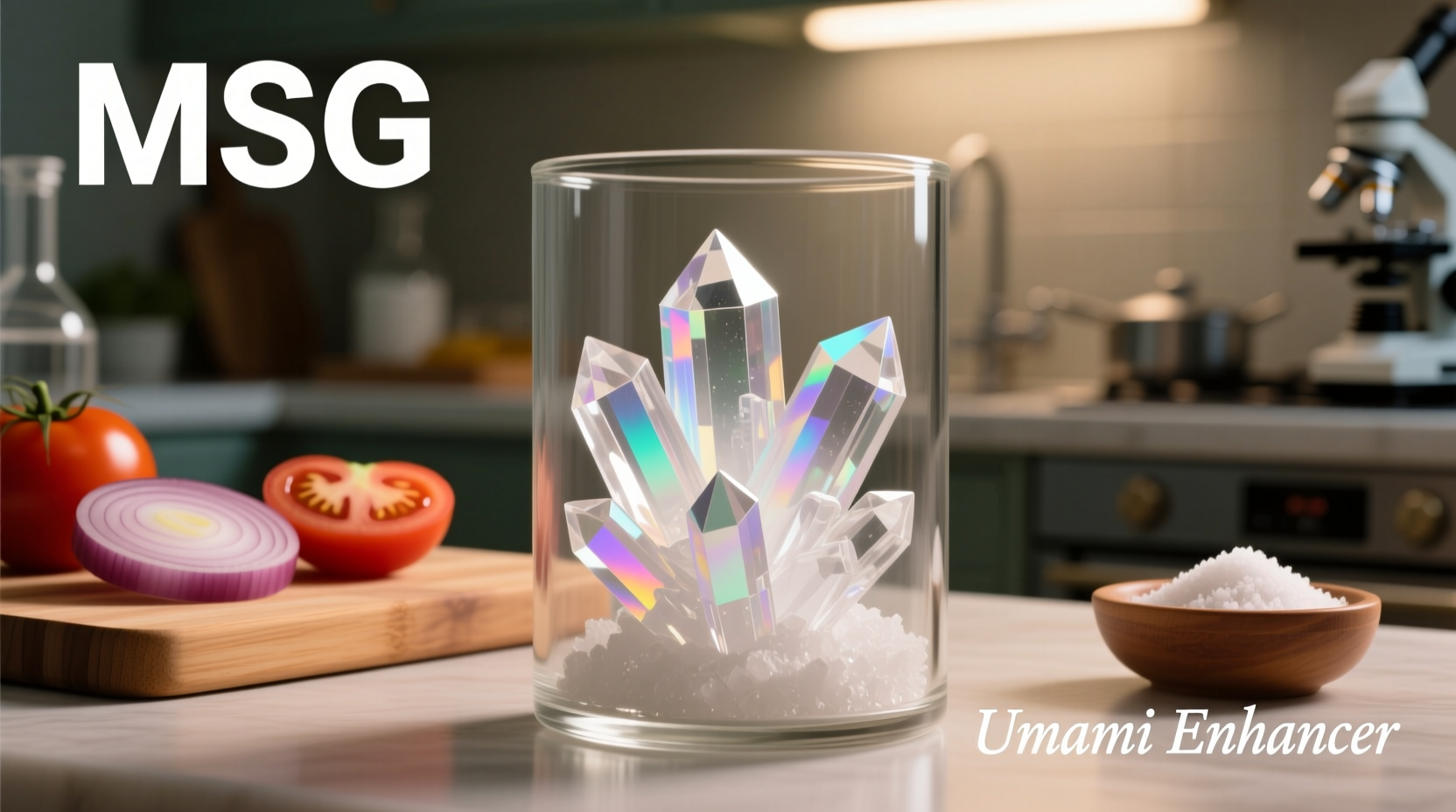Understanding MSG: More Than Just a Flavor Additive
When you ask what is MSG in food, you're exploring one of the most misunderstood ingredients in culinary science. MSG, or monosodium glutamate, isn't some mysterious chemical—it's the sodium salt of glutamic acid, an amino acid your body produces naturally. This compound activates umami receptors on your tongue, creating that satisfying savory sensation in foods ranging from aged cheeses to soy sauce.
The Science Behind MSG's Flavor Magic
Glutamic acid exists in two forms: bound (part of protein structures) and free (available to trigger taste receptors). When food ferments, ages, or cooks, proteins break down, releasing free glutamic acid. MSG delivers this free glutamate in concentrated form, enhancing existing flavors without overpowering them. Think of it as a flavor amplifier rather than a flavor itself.

MSG Timeline: From Seaweed to Supermarket Shelves
In 1908, Japanese chemist Kikunae Ikeda isolated glutamate from kombu seaweed while investigating why dashi broth tasted so satisfying. He patented MSG production and named the taste "umami" (Japanese for "delicious essence"). By the 1950s, MSG became a global food industry staple after scientists developed cost-effective fermentation methods using sugar cane or molasses—similar to yogurt or vinegar production.
Natural vs. Added MSG: What's in Your Food?
| Natural MSG Sources | Common Added MSG Products |
|---|---|
| Aged cheeses (Parmesan, Roquefort) | Seasoned salts and spice blends |
| Ripe tomatoes and tomato products | Instant noodles and soup mixes |
| Mushrooms (especially shiitake) | Processed meats (sausages, deli meats) |
| Soy sauce and fish sauce | Chips and savory snacks |
| Walnuts and other nuts | Canned vegetables with seasoning |
MSG Safety: Separating Fact from Fiction
Despite persistent myths about "Chinese Restaurant Syndrome," decades of research confirm MSG is safe for the general population. The U.S. Food and Drug Administration classifies it as Generally Recognized As Safe (GRAS), while the World Health Organization states it "poses no hazard" at normal consumption levels. Double-blind studies consistently fail to reproduce alleged MSG sensitivity symptoms under controlled conditions.
Practical Guidance for Consumers
If you're checking labels for what is MSG in food products, look beyond just "monosodium glutamate." Food manufacturers may list it as:
- Hydrolyzed vegetable protein
- Autolyzed yeast
- Glutamic acid
- Sodium caseinate
However, remember that naturally occurring glutamate in foods like tomatoes or Parmesan functions identically to added MSG—your taste receptors can't distinguish the source.
Context Matters: When Sensitivity Might Occur
While true MSG allergy is exceptionally rare, some individuals report temporary symptoms like headache or flushing when consuming very large doses (3 grams or more) on an empty stomach. This differs significantly from everyday consumption levels in normal meals (typically 0.1-0.8 grams per serving). The European Food Safety Authority established an acceptable daily intake of 30 mg per kilogram of body weight, far exceeding typical dietary exposure.
Smart Cooking with Umami Boosters
Whether you use commercial MSG or natural alternatives, understanding umami can transform your cooking. Try these techniques:
- Dry-toast mushrooms before adding to dishes to increase free glutamate
- Combine tomato paste with soy sauce in sauces for layered umami
- Add a Parmesan rind to soups for natural glutamate release
- Use fermented ingredients like miso or fish sauce as natural MSG sources
Key Takeaways for Informed Choices
Understanding what is MSG in food empowers you to make informed decisions without fear. This flavor enhancer has been safely used for over a century, with scientific consensus confirming its safety for nearly all consumers. Whether you choose to use added MSG or rely on natural umami sources, recognizing how glutamate enhances savory flavors can elevate your cooking while separating evidence-based facts from persistent myths.











 浙公网安备
33010002000092号
浙公网安备
33010002000092号 浙B2-20120091-4
浙B2-20120091-4